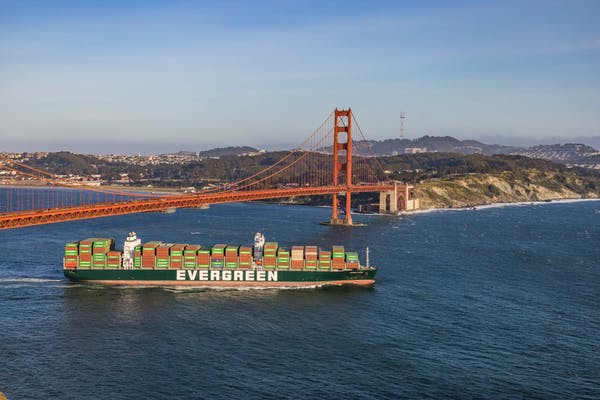What You Need to Know About Port Congestion – Infographic

Port congestion is when a ship coming into a port for the express purpose of cargo or passenger operations is either unable to berth at the desired location or needs to wait for an opportunity for docking.
In such a case, there is no space for the ship to unload cargo, and therefore all operations stop. Port congestion is a major problem faced by most ports worldwide. It can occur for different reasons such as extreme weather conditions, shortage of fuel or diesel, breakdowns, etc.
To combat port congestion, ships are often required to call at sea or port to unload their cargo. However, this is not always possible, and therefore the only solution is to store the excess tonnage normally used on board and ensure that the ship has space available when called at sea.

Why does Port Congestion Happen?
Increased fuel surcharges, stricter tankers rules, tougher security procedures, global events, and a tightening economy contribute to port congestion. Cargo that used to arrive at its specified time and date may now take longer due to weather concerns and extra time spent checking for illegal or dangerous material loads. Even smaller shippers can encounter extra time delays when shipping lines wait for their overseas carriers to return from a trip. These factors combine to cause congestion, especially when extra time is added to each shipment’s delivery date.
Port Congestion in the Philippines
With increasing international trade and immigration, the Philippines is experiencing port congestion. The burgeoning of container activities has resulted in a large build-up of material at sea and land in the country. A large portion of this build-up occurs at the main international port in Manila.
The rising population and increased traffic at the country’s ports have resulted in inefficiencies in its transport system – in which Manila has long been a major problem area. In some areas, there are physical problems caused by the number of ships and containers. In other areas, the inefficiency caused by inadequate infrastructure makes it difficult to use the existing ports to their fullest potential.
In addition to affecting the overall transport system of the country, port congestion has also affected the handling of goods. Many goods come by sea to the Philippines either by land to the larger cities or across the island on trucks. Businesses are affected when port congestion forces goods to be unloaded at each port and then transported to larger harbors. The delays caused by port congestion can affect an exporter’s profit schedule, making the whole exporters line more difficult than usual.
Preventing Port Congestion
The solutions provided by a global freight forwarding company can alleviate these problems. A company that can help an international trade broker better manage its supply chain can help them avoid common mistakes that can occur during port congestion.
Freight forwarding companies can also provide advice on the best way to streamline their operations and increase their ability to meet the demands of their customers. These experts can help ensure that the long-term viability of an international trade business is not put at risk due to short-sighted actions by shipping companies and brokers.
Excelsior Worldwide Freight Logistics conducts free orientation for those who are willing to learn. It is our advocacy to share our knowledge & experience worth more than a decade in the business. Visit our website today at www.excelsior.ph to learn more about our service.
